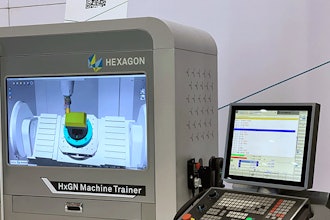
For what appears to be a huge leap forward in innovation for helmet safety, the NFL has awarded a total of $1.55 million split among three companies in its Helmet Challenge.
The challenge, launched in 2019, aimed to dramatically accelerate the timeline for the development of a football helmet better than anything currently being worn by NFL players.
By tapping into the expertise, creativity and vision of a wide range of individuals and companies, the NFL expects these innovations to mark a transformational improvement about four times greater than typically seen year-over-year in helmet design.
“For the groups to address this challenge in ways that have real transferability to football is quite remarkable,” says Jeff Miller, the league’s executive vice president of communications, public affairs and policy. “I don’t think we were surprised with the outcome, so far; that was the hope when we brought people together from different walks of life, lots of different experiences and expertise to address this issue.
“It’s the ability for people from different backgrounds and different expertise to find 'I can bring this and you can bring that, how can we integrate those to create a better solution than we have done on our own?′ ”
Receiving the grant awards are Kollide of Montreal ($550,000); Xenith of Detroit ($496,500); and Impressio of Denver ($454,000). Each has teamed with experts in a variety of fields in seeking improved designs and materials for helmets.
Impressio leveraged a unique soft, multifunctional elastic and highly energy-absorbing material, combined with 3D printing, to rapidly develop novel helmet and liner solutions.
Kollide developed and optimized a prototype with an energy absorption system. Its liner is made of complex and organic 3D printed mesh.
Xenith’s prototype uses highly performing and durable materials, incorporating a compliant shell, 3D-printed lattice carrier, energy control structures and customizable foam inserts for improved helmet performance and comfort.
“The challenge itself was to make a gigantic leap in helmet innovation and technology,” says Ron Jadischke, chief engineer at Xenith. “As we got into it, I was a little surprised how much of a challenge this actually was. One would think if we put enough brainpower and research into it we would easily be able to get there, but it was truly a challenge. It took some deep innovation in both materials and structures to get to where we got.”
Where they have gotten to is a place of solid advancement in this field, with much more to come. As Miller says, the challenge could have resulted in iterations of helmets that are much safer, but “would not allow a player to exit the locker room with the helmet on his head.”
The goal is safer, comfortable and versatile helmets that are relatively easy to manufacture and would eventually apply beyond professional football to colleges and youths.
“The work we want to perform is improving the material,” says Franck Le Naveaux, Kollide’s project coordinator and a former boxer. “Most of what we have developed is a virtual design and testing platform and we’ve learned a lot about how the mesh structure behaves, but there is still a lot to discover and fine tune.”
One area these three projects can offer future help is in position-specific helmets. The NFL has made that a priority, but the variety of impacts players take at different positions makes that solution a difficult task.
Not impossible, though.
“I think that is where the future will be, but is still a tough hill to climb,” says Chris Yakacki, president and CTO of Impressio. “All of us have adopted some approach that allows you to tailor the spots in and around the helmet rapidly. We are making them on a daily basis in the lab, and doing these iterations on an extreme pace. We can go through three or four iterations in a week.
“One helmet shouldn’t fit all, and one test shouldn’t fit all. We’ll get more information to say, for this position, these locations are going to get hit more frequently. And then using our models, using our test equipment, we can simulate and optimize not only for the general test criteria but for very specific position criteria.”
Miller says he is enthused about the current dynamic.
“Innovation seems to have taken hold and bringing new ideas from more competitors or entrepreneurs or small businesses is only going to accelerate that,” he notes.
Adds Yakacki: “If you look at a telephone 10 years ago people would say, 'What is that?′ I think that is what we are going to feel about helmets in the same timeframe. What we can design and how fast we can do it, it is going to be on a short horizon.”






















